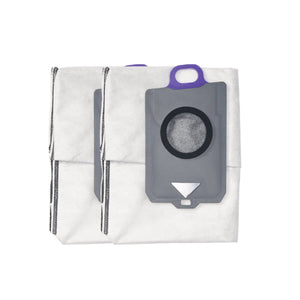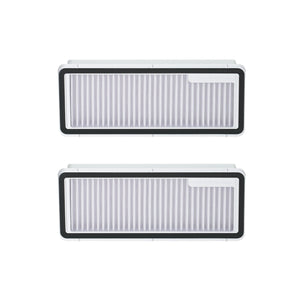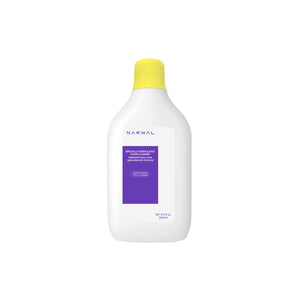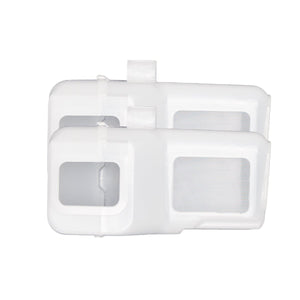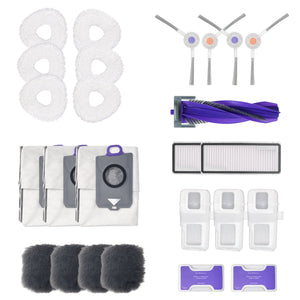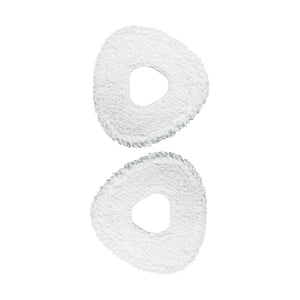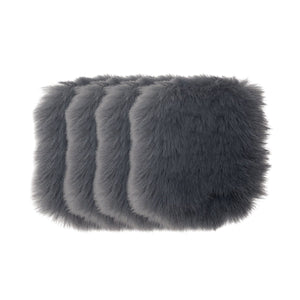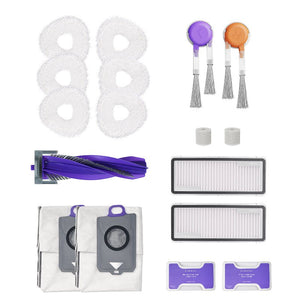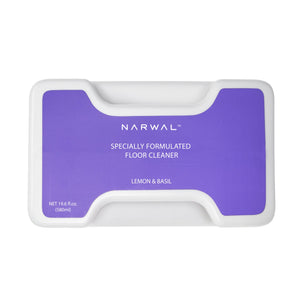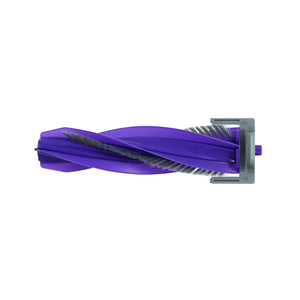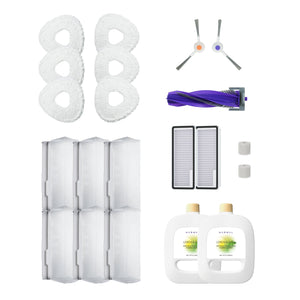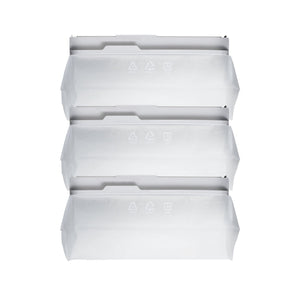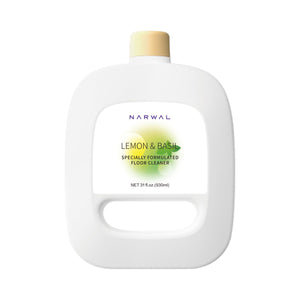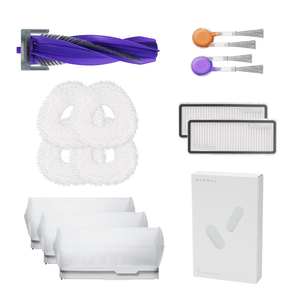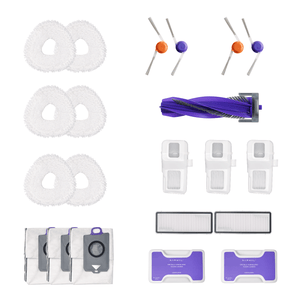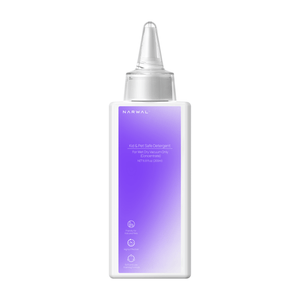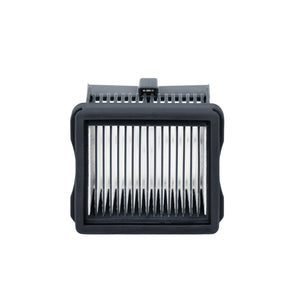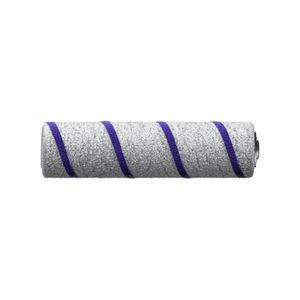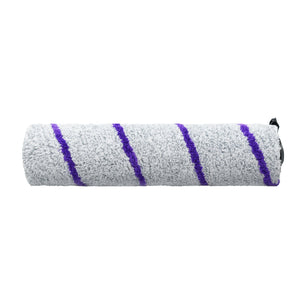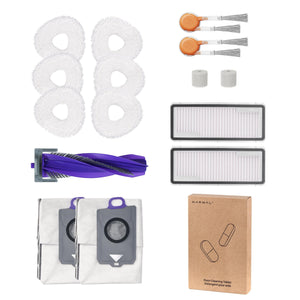Keeping your hardwood floors pristine while managing daily messes seems like an impossible task, especially when traditional vacuums can’t be trusted on delicate surfaces. Imagine a vacuum that not only handles dirt, dust, and pet hair but also empties itself without you lifting a finger. Sounds too good to be true? It's not. In this guide, we’ll walk you through everything you need to know about choosing the best self-emptying robot vacuum for hardwood floors—from what features matter most to how they perform in real-world cleaning situations.
We’ll start by exploring the top models that combine self-emptying convenience with hardwood protection. Next, we’ll cover the essential factors to consider when selecting your ideal robot vacuum, like suction power, brush types, and mopping capabilities. Afterward, we’ll dive into the actual cleaning performance these vacuums deliver on hardwood floors, addressing fine dust, pet hair, and more. We’ll also answer the crucial question: Can these robots damage your hardwood floors? Finally, we’ll share simple maintenance tips to ensure your robot keeps working at its best while still preserving the beauty of your floors. Let’s get started!

Top Self-Emptying Robot Vacuums for Hardwood Floors in 2025
If you're searching for the best self-emptying robot vacuum for hardwood floors, Narwal’s 2025 lineup offers some of the most advanced, floor-safe options on the market. Below are three standout models, each designed to handle dust, hair, and spills without scratching your wood surfaces or making you clean the robot yourself.
Narwal Freo Z10 – The Most Powerful for Deep Floor Care
The Freo Z10 combines high-pressure mopping, 15,000Pa suction, and edge-to-edge cleaning in one sleek system. Its triangular mop head applies 8N of downforce to mimic hand-scrubbing along walls and corners. For hardwood floors, it features a floor-care mode that protects and brightens wood while reducing over-wetting through surface-aware water control. Dirt is stored in a 2.5L antimicrobial self-emptying dust bag, good for up to 120 days. Z10 is a full-service solution for deep cleaning hardwood floors.
[cta:narwal-freo-z10-robot-vacuum-mop]
Narwal Freo Z Ultra – Best AI Smart Cleaning for Complex Homes
The Freo Z Ultra uses dual RGB cameras and AI-powered chips to recognize over 120 objects, types of dirt, and even spills. It's 12,000Pa suction adjusts in real time: switching between vacuuming and mopping as needed. When it detects a mess, it activates matrix cleaning patterns until the job is done. The self-emptying dock compresses waste quietly and separates wet and dry trash to control odor. It's perfect for homes with pets, children, or frequent clutter.
[cta:narwal-freo-z-ultra-robot-vacuum-mop]
Narwal Freo Pro – The Best Balance of Performance and Value
Priced more accessibly, the Freo Pro delivers 8,500Pa suction, a patented DualFlow tangle-free system, and high-speed scrubbing with its triangular mop. It's certified zero-tangling, making it ideal for pet hair on hardwood floors. The 1L HEPA dust bag handles up to 7 weeks of cleaning. Edge cleaning is enhanced with EdgeSwing™ technology, and smart sensors avoid damaging sensitive wood surfaces. If you're looking for hands-free maintenance and strong hardwood performance, this is it.
[cta:narwal-freo-pro-robot-vacuum-mop]
How to Choose a Great Self-Emptying Robot Vacuum for Hardwood Floors
A good self-emptying robot isn’t automatically great for wood floors. When buying one, you need to look beyond suction power or how sleek the app looks. Here’s what actually matters for a hardwood-safe, truly hands-free experience.
Start with the mop system.On wood, too much moisture can stain or warp the surface. Look for a robot that features a mop lifting system, or better, one that adjusts water flow based on the floor type. Triangular mop heads and downward pressure (around 2.5 to 3 lbs) help clean corners without dragging wet pads across dry boards. For wood, soft mop fibers and controlled scrubbing are safer than aggressive spinning pads.
Adjustable suction is a must.Wood floors often collect fine dust in seams and along planks, but too much power can actually scatter particles or damage softer finishes. Choose a vacuum with variable suction levels, or one that adapts suction in real-time based on surface type or debris level. Balance matters more than brute force here.
Check how the auto-empty dock handles dust.Not all docks are equal. A good auto-empty system should seal dust in a bag that lasts weeks—ideally up to 7 to 12 weeks without maintenance. For wooden homes, airtight waste storage matters: it avoids leaks, odors, or dusty blowback that can settle on furniture or floors. Systems that dry or compress the waste offer added hygiene and fewer touchpoints.
Brush design matters more than you think.Hard bristles or low-end rollers can scratch sealed wood or push dirt instead of collecting it. Choose a robot with a tangle-free roller that glides smoothly and won’t leave scuff marks. Certified zero-tangling brushes not only help with pet hair but also reduce daily wear on your floors.
Smart sensors should protect, not just detect.The best robots don’t just avoid walls—they recognize when they’re near wood baseboards, pet bowls, or rugs. Real-time AI-driven floor detection lets the machine change modes: pause the mop, increase suction, or skip a risky area. This is crucial in mixed flooring homes or where you have different wood finishes.
Finally, look for real hands-free automation.A true self-emptying robot should not just dump dust—it should also wash and dry the mop, track dirt levels, and clean itself. That’s what turns it into a tool you forget, not a chore you manage. Features like app control, voice activation, and custom routines make the system feel truly automatic, not just automatic on paper.

Cleaning Performance on Hardwood Floors with Self-Emptying Robot Vacuums
Hardwood floors may look easy to clean—but they actually reveal what most vacuums miss. From fine dust to streaky mopping, and from pet hair to edge residue, these floors expose the truth about a robot’s performance. Below, we break down the four key cleaning challenges and how top models handle them.
Fine Dust and Crumb Pickup
Wood floors often collect fine particles in seams, cracks, and grooves. Basic vacuums might pass over these areas without pulling anything up. The best self-emptying robot vacuums for hardwood floors use precise edge suction and smart slowdown modes to capture debris before it scatters. Real-time dust sensing and suction control ensure fewer missed spots—especially in high-traffic areas.
Mop Quality and Water Residue
Sticky spots, dried spills, and water streaks are common complaints. A high-quality mop system should leave no streaks or residue, especially on glossy finishes. Top models use rotating mop pads, balanced water release, and intelligent re-mopping for heavily soiled zones. Floors dry faster, stay safer, and look freshly polished—without manual touch-up.
Edge and Baseboard Precision
Most dust builds up where the floor meets the wall. Without dedicated design, robots leave a fine line of untouched debris. Advanced systems now include edge-targeting arms or side-swinging mop heads that clean right to the baseboards. Some even adapt brush pressure and speed as they approach vertical surfaces for more complete coverage.
Handling Hair, Spills, and Mixed Messes
Hardwood floors show everything—pet hair, fine crumbs, liquid trails. A great vacuum responds dynamically: boosting suction, lifting the mop, or repeating passes where needed. The result isn’t just cleaner—it’s cleaner without your help. Adaptive cleaning matters most in real homes, not just in lab demos.

Will a Self-Emptying Robot Vacuum Damage Your Hardwood Floors?
It depends on the design, and the wrong one absolutely can. Hardwood floors are sensitive to moisture, abrasion, and uneven pressure. Not every robot vacuum is built to handle that.
Damage usually comes from a few sources: stiff wheels that scuff the surface, bristle brushes that leave swirl marks, wet mop pads that soak into seams, or even blowback from poorly sealed dust disposal systems. Some models drag dirt instead of lifting it, pushing grit across the finish and dulling the wood over time.
But the best self-emptying robot vacuums for hardwood floors are engineered with this in mind. They use soft, non-abrasive rollers, apply gentle downward pressure, and lift mops when moving between dry and wet zones. Moisture is tightly controlled, and smart navigation avoids repeated passes in the same direction. Some even adjust their cleaning pressure based on floor type or debris level—so they’re not just avoiding damage, they’re actively protecting your surfaces.
If you’re using a robot vacuum with sealed wood, engineered hardwood, or delicate finishes, look for features like adaptive cleaning modes, controlled water release, and certified floor-safe brushes. These aren’t just marketing terms—they’re the difference between a tool that helps and one that harms.

Maintenance Tips When Using Self-Emptying Robot Vacuums on Hardwood Floors
Even the best robot vacuum won’t protect your floors if it’s not maintained. Hardwood is unforgiving—residue builds up, moisture settles in, and a dirty brush or sensor can turn helpful automation into hidden damage. Here’s how to keep your floors clean and your vacuum safe to use.
Always start with a clean mop.Letting your robot reuse a dirty pad is a fast way to spread grime or streak your floors. Choose a model with automatic mop washing and drying, and still check weekly for buildup. A damp, clean mop is key to spotless wood.
Keep wheels and sensors debris-free.Even tiny particles stuck in the wheel well or around sensors can scratch a smooth floor. Once a week, wipe the underside with a soft cloth. If you’ve got pets, do it twice. Soft wheels won’t help if they’re caked with grit.
Don’t let moisture linger on the boards.If your robot doesn’t auto-dry its mop, remove and rinse it after cleaning—especially in humid environments. Use floor-type presets or water-level adjustments to avoid over-wetting delicate wood. Hardwood doesn’t like to stay damp.
Empty and clean the dust bag before it smells.A good self-emptying dock should last weeks, but humidity, pet hair, and fine dust can shorten that cycle. When in doubt, check it early. Change the bag, wipe the chamber, and replace filters as needed to keep suction strong and the system hygienic.
Use zones and no-go areas wisely.Mark out sensitive or recently waxed sections of the floor using your robot’s app. Some models let you customize cleaning routines for specific rooms, which helps extend the life of wood finishes and avoid unnecessary passes.
Treat your vacuum like a part of the home—not just a tool—and your hardwood floors will thank you for it.

Ready for a Self-Emptying Vacuum Built for Hardwood?
Finding a robot vacuum that handles wood floors gently—and still empties itself—is harder than it sounds. Too much water, rough brushes, or weak edge coverage can make even premium models a poor fit for delicate finishes.
Narwal’s latest lineup was designed from the ground up to solve exactly this. From triangular mop heads that reach corners to auto-lift mopping, from tangle-free brushes to precise moisture control, every part of the system was built to clean without damage. And with self-washing, self-drying, and smart dirt detection, your home stays cleaner with less effort—no maintenance cycle needed.
If you want a robot vacuum that respects your floors as much as it cleans them, Narwal is the one to try.





















